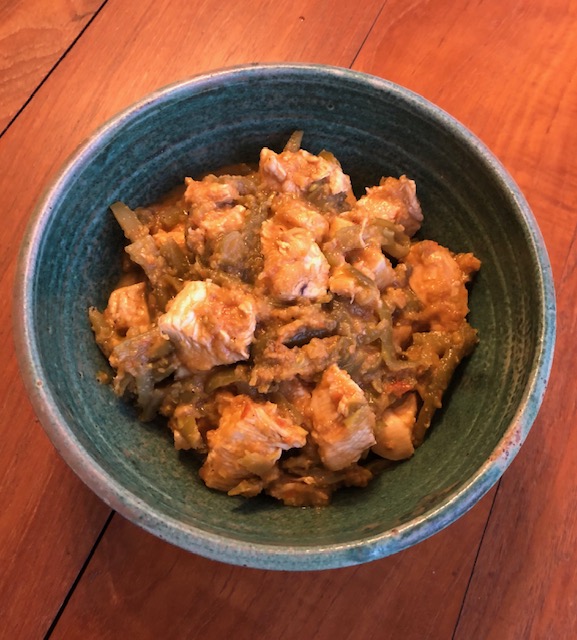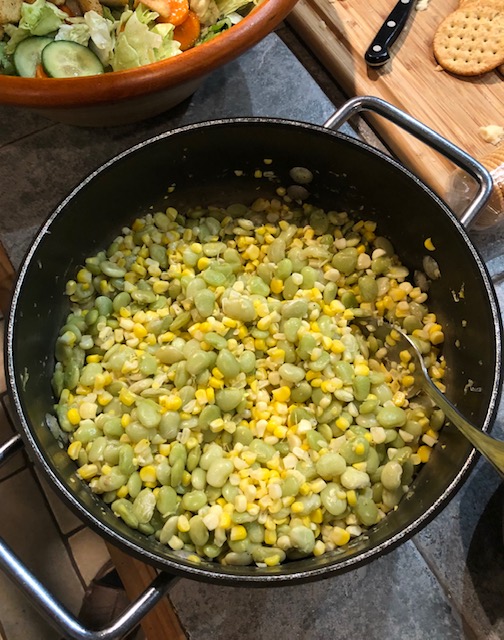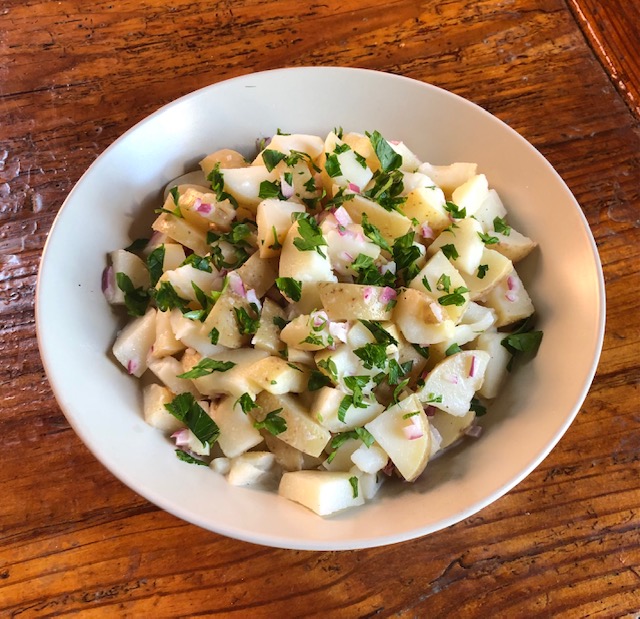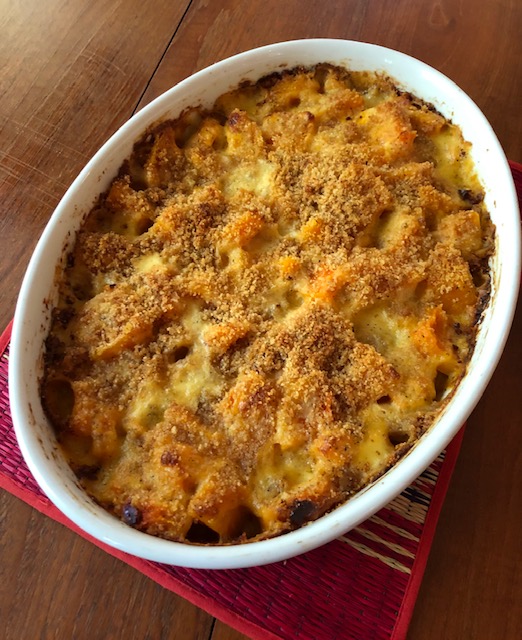Chicken Braised in a Healthy Vegetable Sauce
Recently, a friend was diagnosed with diabetes. He has
typically enjoyed my cooking, and even calls me his “Food Buddy.” So I came up
with a dish for him, based on the type of food he usually likes, but made it
diabetic friendly: satisfying protein, fiber-containing but low-starch
vegetables, plenty of flavor. There were no added carbohydrates, and only
minimal oil and modest salt. Several quarts of my new Chicken Braised in
Vegetable Sauce are being delivered to him this morning, as I write this blog
article.
I researched ingredients that are best for my friend’s
condition, and used several cooking tricks I’ve picked up over the years. I
wanted the dish to be tasty enough that people without a restricted diet would
enjoy it and, ideally, not notice anything unusual. The dish is a thick stew
with chicken and green beans in a richly flavored sauce. It can be eaten alone
or accompanied by a salad. For those without restrictions the stew can also be served with noodles, rice, potatoes
or bread.
The recipe serves 6 people.
1 medium-small onion
2 cloves garlic
2 very small or 1 medium yellow or zuccchini squash
2 medium tomatoes
1 teaspoon olive oil
2 cups low-salt chicken broth or water
3/4 teaspoon paprika
1/4 teaspoon ground black pepper
1/4 teaspoon ground celery seed, or celery salt
1/4 teaspoon oregano
1/8 teaspoon cayenne
1 (12-ounce) bag frozen French-cut green beans
1 1/2 teaspoons salt (reduce to 1 1/4 teaspoons if using
celery salt)
2 pounds boneless, skinless chicken breast
Peel onion and cut it in chunks. Peel garlic cloves. Cut tip
ends off squash and cut squash into chunks. Cut core end out of tomatoes and
cut flesh into chunks. Puree these vegetables together in a food processor,
part at a time if necessary.
Transfer the mixture to a heavy pot. Add the olive oil. Cook
over medium heat, stirring frequently and scraping the bottom of the pot. When
the mixture begins to thicken add the chicken broth or water and seasonings
other than the salt.
Simmer this mixture, covered, ten minutes, stirring
occasionally. Meanwhile, prepare the chicken: Trim off all tough and fatty
parts. Cut chicken flesh into 1-inch cubes.
When vegetables and liquid have simmered, add the frozen
green beans. Stir and bring to a boil. Reduce to simmer, and cook, covered,
stirring occasionally, until greenbeans are tender (10-15 minutes).
Add salt and bring heat back up to medium high. Add chicken
and, stiring frequently, cook until tender and done, 15-20 minutes. If sauce is
becoming dry, add a little water as needed. When cooked, check salt in the
sauce and a piece cut off a chunk of chicken. If needed, add a little salt. The
stew can be served now, or for richer flavor, refrigerated and reheated later.































